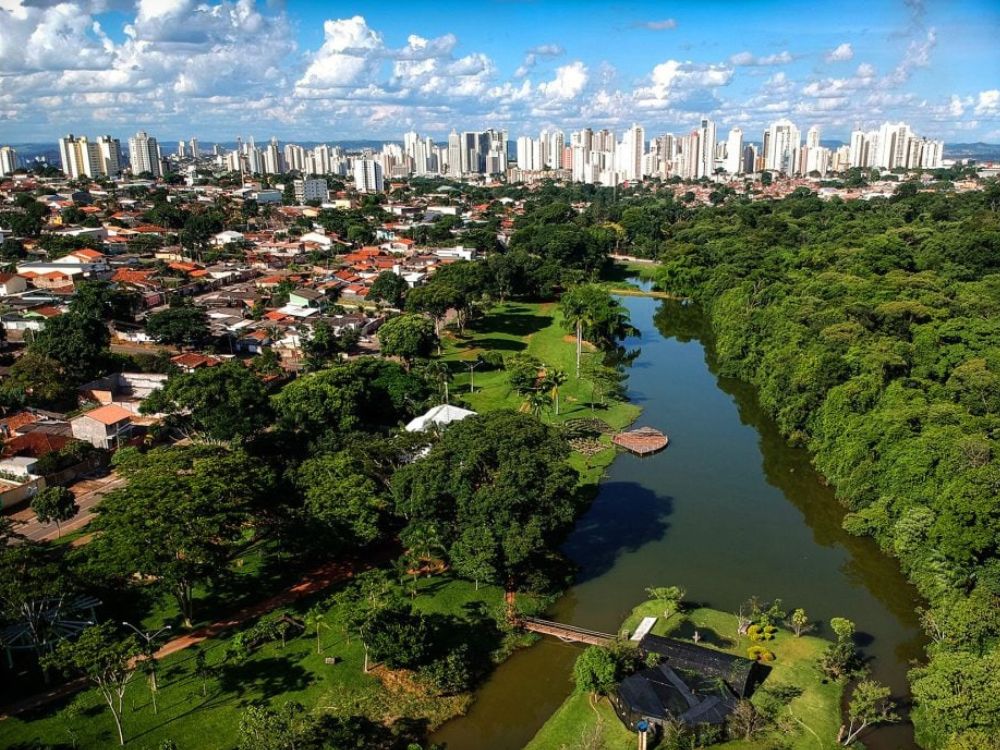
Amid the vast Brazilian territory, Goiás stands out as a state with a rich history and cultural diversity. With temperatures inviting exploration of its natural beauties, today’s thermometer reads a pleasant 31°C, promising a sunny afternoon with a slight chance of rain, typical for this time of year.
This climate is perfect for residents and visitors who wish to enjoy the picturesque landscapes and outdoor attractions that Goiás offers in abundance.
The population of Goiás, over 7 million inhabitants, reflects the demographic expansion accompanying the state’s development. Goiás stretches over an area of 340,242.859 km², offering everything from plateaus to mountain ranges that shape the horizon.
This vast territory is home to diverse communities and cultures, each contributing to the state’s rich social and cultural tapestry. The cities are interconnected by a network of roads crossing the cerrado, allowing access to tourist destinations and rural areas where life follows a more tranquil and traditional rhythm.
The colonization of Goiás dates back to the 18th century, driven by the gold rush and the arrival of cattle ranchers seeking fertile lands. This heritage is visible in local customs, celebrating both traditional festivals like the Cavalhadas and the Procissão do Fogaréu, and unique cuisine blending indigenous and European flavors with the touch of the tropeiros.
The Cavalhadas, for instance, reenact battles between Moors and Christians, with riders in colorful costumes, while the Procissão do Fogaréu, held during Holy Week in cities like Goiás Velho, creates a visual spectacle with torches illuminating the night.

Speaking of flavor, Goiás’ cuisine is an invitation to the senses, with dishes like empadão goiano, arroz com pequi, and pamonha goiana, which are true ambassadors of local gastronomy. The empadão goiano, filled with chicken, sausage, olives, and other ingredients, is a hearty meal reflecting Goiás’ hospitality and generosity.
Arroz com pequi, on the other hand, presents the unique flavor of pequi, a typical cerrado fruit, loved by some and controversial for others, but undeniably part of the region’s culinary identity. Pamonha, made from fresh corn, can be sweet or savory and is a delicacy that brings friends and family together around its preparation and consumption.
The festivities in Goiás are a spectacle in themselves, with events ranging from traditional June festivals to celebrations that extol the culture and faith of the people of Goiás.
During the June festivals, arraiais fill the cities with music, dance, and typical foods like canjica and quentão. Other important events include the Goiás Winter Festival, celebrating art and music with a varied program, and the Chapada dos Veadeiros Traditional Cultures Meeting, promoting cultural exchange between traditional communities and visitors.
Although Goiás does not have ocean beaches, its river beaches, like Praia do Sol and Praia Quarto Crescente, offer a unique leisure experience and contact with nature. These beaches, located on the banks of crystal-clear rivers, are popular destinations for families seeking a tranquil refuge where they can swim, picnic, and enjoy the sun.
Additionally, Goiás is blessed with numerous waterfalls and natural pools, particularly in the Chapada dos Veadeiros region, an ecological paradise known for its trails, waterfalls, and biodiversity.
Goiânia, the capital, is just one of the important cities in the state, which includes other significant urban centers like Anápolis and Rio Verde, each contributing its own identity to Goiás’ cultural mosaic. Goiânia is an administrative and economic center, with modern architecture and a vibrant cultural life.
The city is known for its large urban parks, like Parque Flamboyant and Bosque dos Buritis, offering green spaces for relaxation and outdoor activities. Anápolis, in turn, is an important industrial and logistics hub, while Rio Verde stands out for its agricultural production, being one of the largest grain and meat producers in the country.
The appearance of Goiás is marked by a landscape combining the intense green of the cerrado with the clear blue of the sky, intersected by rivers drawing paths of life and history, like the Rio Vermelho, and framed by majestic mountain ranges like the Serra Dourada.
The biodiversity of the cerrado, with its unique plants and animals, is a natural treasure attracting biologists and ecotourists from around the world. The trails winding through these mountain ranges offer panoramic views and the opportunity to explore caves, rock formations, and the rich flora and fauna of the biome.

The colonial architecture of historic cities like Goiás Velho is a testament to the state’s rich cultural heritage. The cobblestone streets, baroque churches, and colorful houses preserve the atmosphere of a past era, while museums and cultural centers keep the history and traditions alive.
The city of Goiás Velho, the state’s former capital, is a UNESCO World Heritage Site and attracts visitors wishing to immerse themselves in its history and culture.
Goiás also stands out in the arts and music field. Sertanejo is the most popular musical genre, with famous duos originating from the state, but there is also a strong scene of Brazilian popular music, rock, and other styles.
Music festivals like Caldas Country Show attract thousands of fans every year. Besides music, the state has a rich tradition in literature and visual arts, with various nationally renowned artists and writers.
Goiás’ economy is diversified, with strong sectors in agriculture, livestock, mining, and industry. Agricultural production, especially grains like soybeans and corn, is one of the pillars of the state economy, while cattle ranching is known for its high-quality meat.
The mining of nickel, gold, and other minerals is also an important economic activity. Recently, Goiás has attracted investments in technology and innovation, with the creation of technology parks and incentives for startups.
This is Goiás, a state that combines tradition and modernity, nature and urbanization, culture and economy harmoniously. An unmissable destination for those who want to know the essence of the Brazilian sertanejo, explore its natural beauties, savor its unique cuisine, and experience its rich cultural traditions.
Come discover Goiás, a place where the past and present meet in a stunning and welcoming setting.
